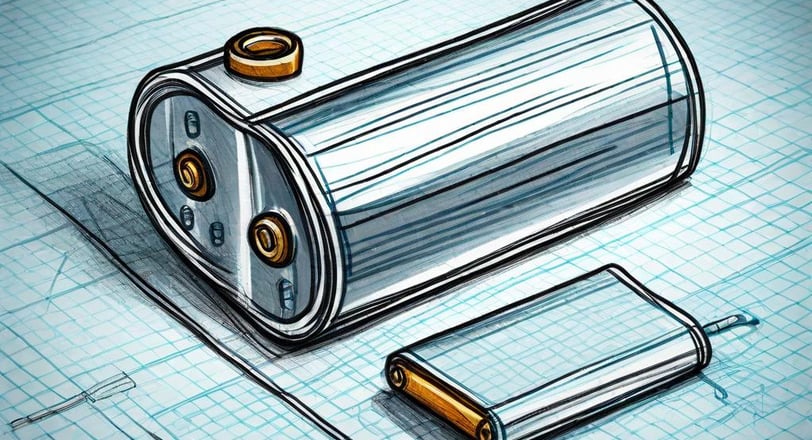Lithium ion Batteries: Components, Advantages, and Disadvantages
Lithium-ion (Li-ion) batteries are a type of rechargeable battery that has become widely used in various electronic devices and electric vehicles due to their high energy density and relatively light weight.


Lithium-ion Battery
Components
A lithium-ion battery is a rechargeable battery that uses lithium ions as the primary component for energy storage. It consists of several key components:
Cathode: The cathode is the positive electrode in the battery and is typically made of lithium cobalt oxide or lithium iron phosphate.
Anode: The anode is the negative electrode and is commonly made of graphite.
Separator: The separator is a thin, porous material that prevents the cathode and anode from coming into direct contact while allowing the flow of lithium ions.
Electrolyte: The electrolyte is a liquid or gel substance that facilitates the movement of lithium ions between the cathode and anode.
Current Collectors: The current collectors are responsible for conducting the flow of electrons between the battery and the external circuit.
Why Lithium-ion Batteries are in the news
Lithium-ion batteries have gained significant attention in recent years due to their widespread use in portable electronic devices, electric vehicles, and renewable energy storage systems. There are several reasons why lithium-ion batteries are in the news:
Energy Density: Lithium-ion batteries have a high energy density, meaning they can store a large amount of energy in a small and lightweight package. This makes them ideal for applications where weight and size are critical factors.
Longer Lifespan: Compared to other rechargeable batteries, lithium-ion batteries have a longer lifespan, allowing for more charge and discharge cycles before performance degradation.
Fast Charging: Lithium-ion batteries can be charged at a faster rate compared to other battery technologies, providing convenience and efficiency for users.
Environmental Impact: With the growing concern for environmental sustainability, lithium-ion batteries are seen as a cleaner alternative to traditional fossil fuel-based energy sources. They produce zero emissions during operation and can be recycled.
Electric Vehicle Revolution: The increasing demand for electric vehicles (EVs) has propelled the development and adoption of lithium-ion batteries. The automotive industry's shift towards electric mobility has been a driving force behind the advancements in lithium-ion battery technology.
About Lithium
Lithium is a chemical element with the symbol Li and atomic number 3. It is a highly reactive metal that belongs to the alkali metal group of the periodic table. Here are some key points about lithium:
Lithium is the lightest metal and the least dense solid element.
It has a low melting point and is highly flammable.
Lithium is commonly found in lithium-rich minerals and brine deposits.
It has various industrial applications, including the production of ceramics, glass, and lithium-ion batteries.
Lithium compounds are also used in psychiatric medication due to their mood-stabilizing properties.
Advantages of Lithium-ion Batteries
Lithium-ion batteries offer several advantages over other types of rechargeable batteries:
High Energy Density: Lithium-ion batteries have a higher energy density compared to other battery technologies, allowing for longer-lasting power.
Lightweight and Compact: Due to their high energy density, lithium-ion batteries can be made smaller and lighter, making them ideal for portable devices and electric vehicles.
Low Self-Discharge Rate: Lithium-ion batteries have a lower self-discharge rate compared to other rechargeable batteries. They can retain their charge for longer periods, even when not in use.
No Memory Effect: Unlike some other rechargeable batteries, lithium-ion batteries do not suffer from memory effect. This means they can be charged and discharged at any time without affecting their overall capacity.
Fast Charging: Lithium-ion batteries can be charged more quickly compared to other battery technologies, allowing for shorter charging times.
Disadvantages of Lithium-ion Batteries
While lithium-ion batteries have numerous advantages, they also have some limitations:
High Cost: Lithium-ion batteries are generally more expensive to manufacture compared to other battery types, primarily due to the cost of lithium and other materials used in their construction.
Limited Lifespan: Although lithium-ion batteries have a longer lifespan compared to other rechargeable batteries, they still have a finite number of charge and discharge cycles before their performance starts to degrade.
Temperature Sensitivity: Lithium-ion batteries are sensitive to high temperatures, which can cause damage to the battery and reduce its overall lifespan.
Potential Safety Risks: In rare cases, lithium-ion batteries can experience thermal runaway, leading to overheating, fire, or even explosion. However, advancements in battery management systems have significantly reduced these risks.
Environmental Concerns: While lithium-ion batteries are more environmentally friendly compared to fossil fuel-based energy sources, their production and disposal still have potential environmental impacts. Proper recycling and disposal methods are essential to minimize these concerns.
In conclusion, lithium-ion batteries have become a vital component in our modern world, powering a wide range of devices and vehicles. Their high energy density, longer lifespan, and fast charging capabilities make them a preferred choice for many applications. However, it is important to consider their limitations, such as cost, limited lifespan, and temperature sensitivity. As technology continues to advance, we can expect further improvements and innovations in lithium-ion battery technology, addressing these challenges and making them even more efficient and sustainable.
